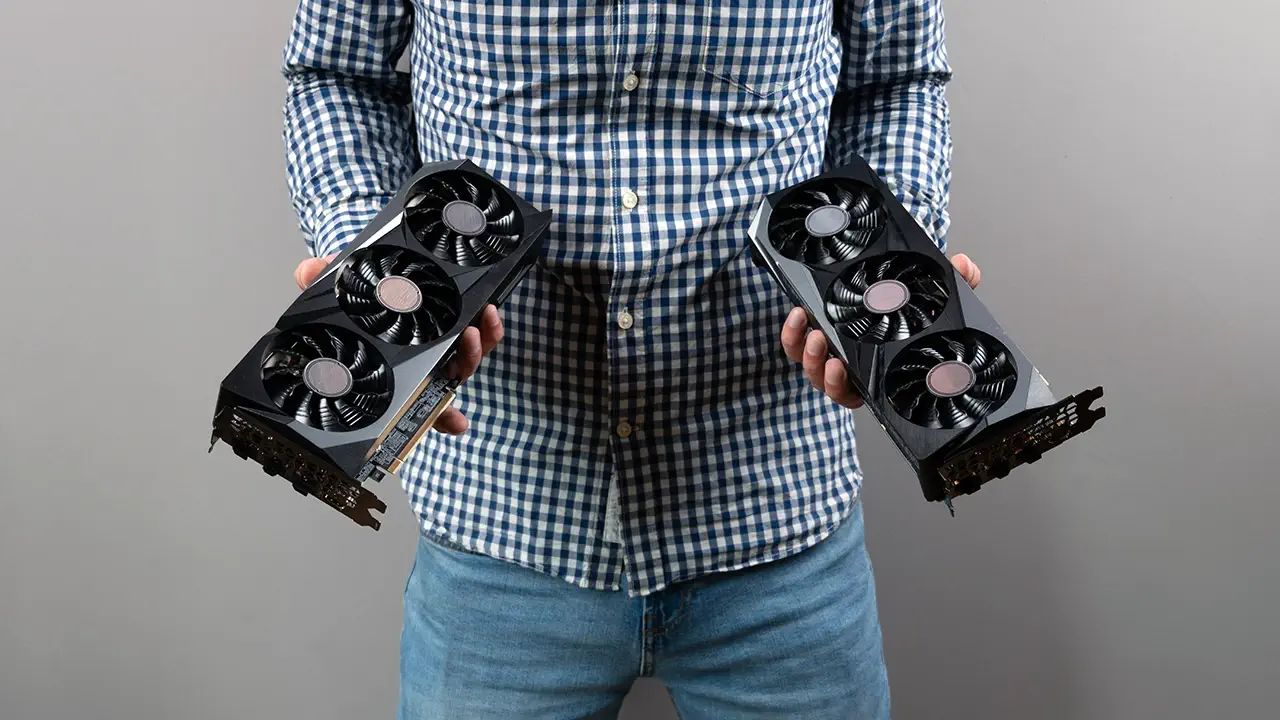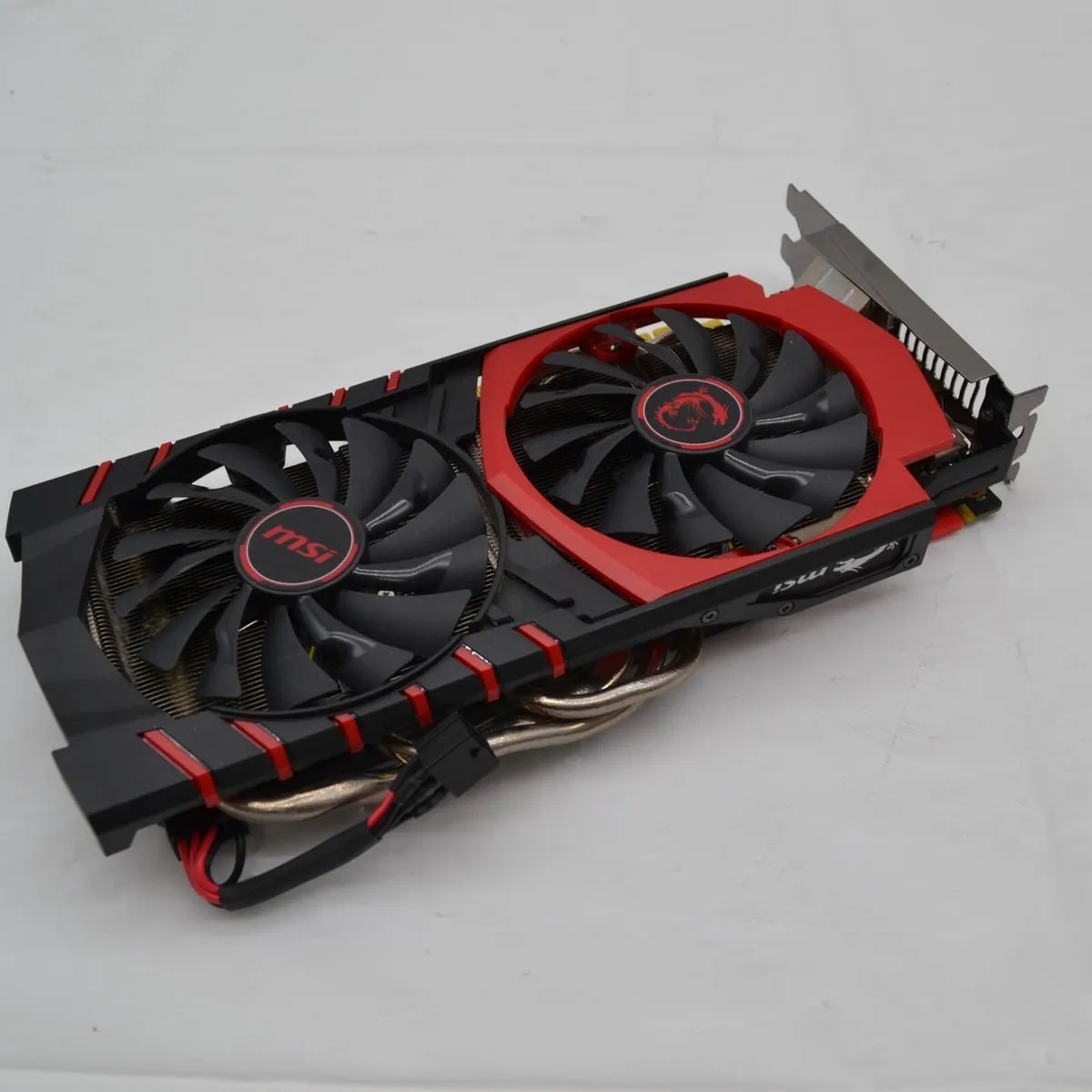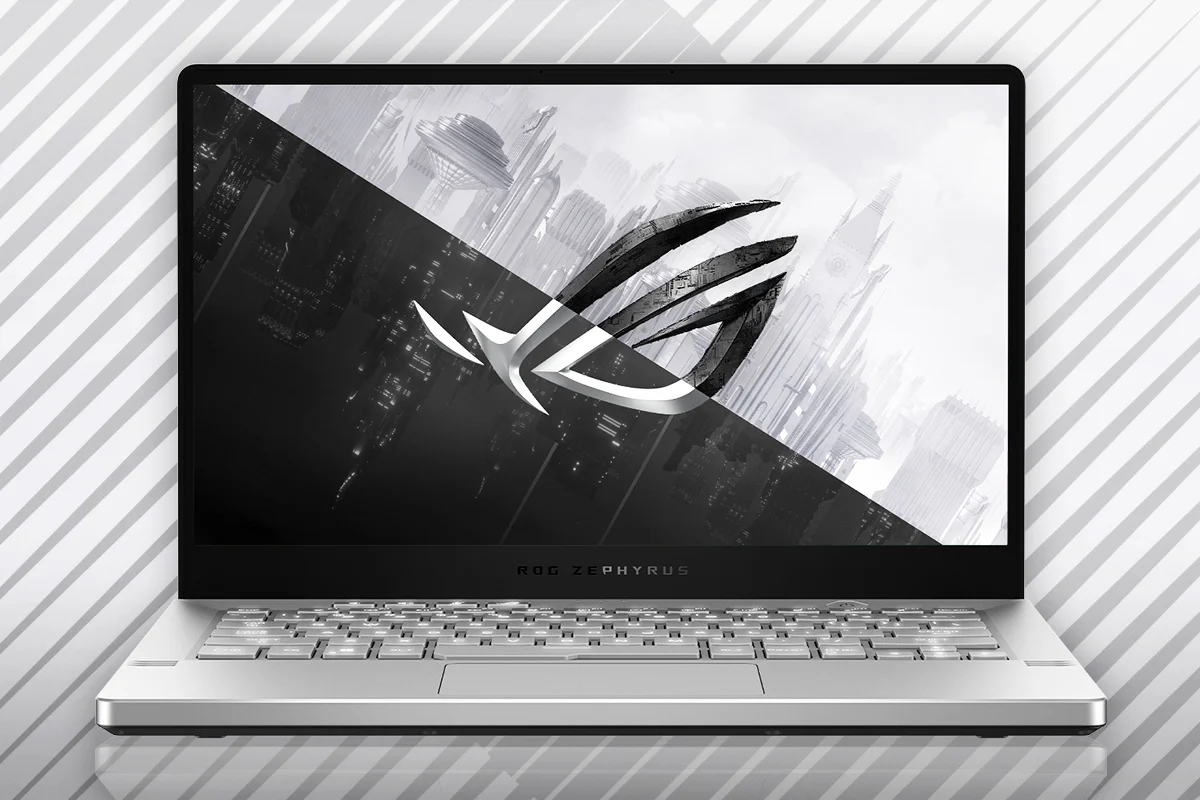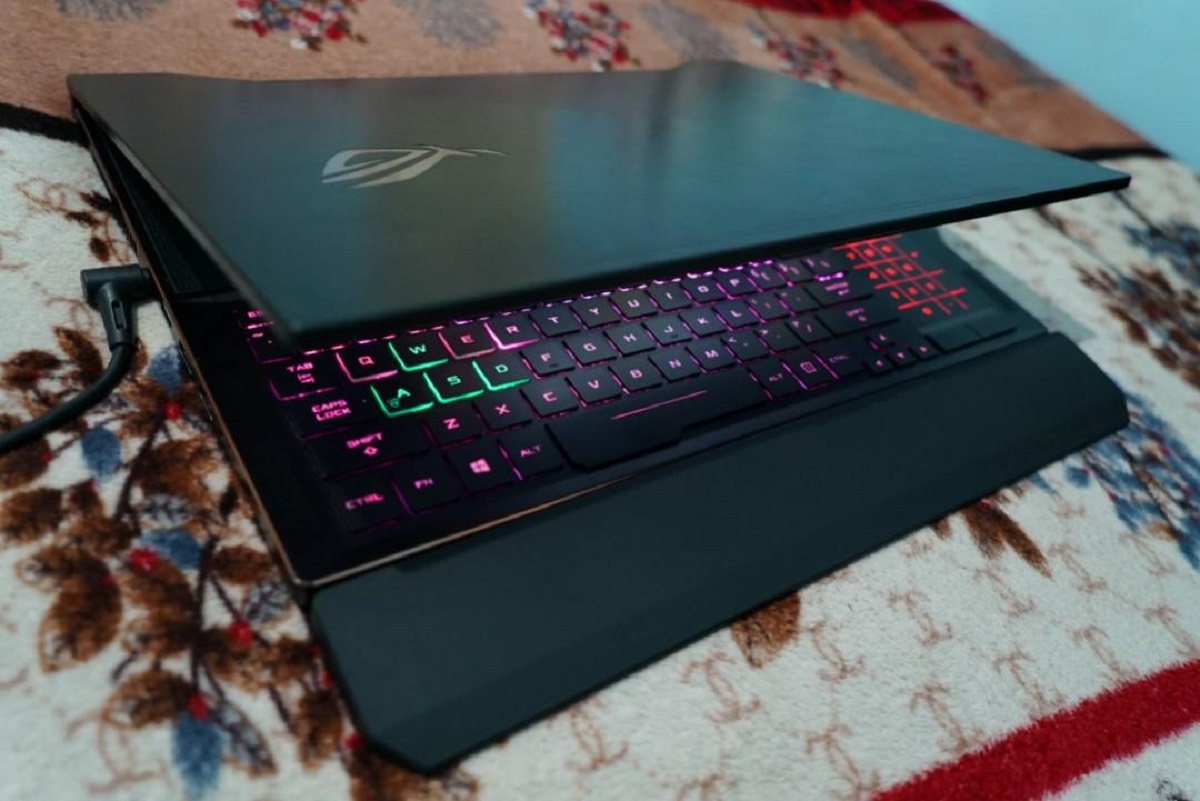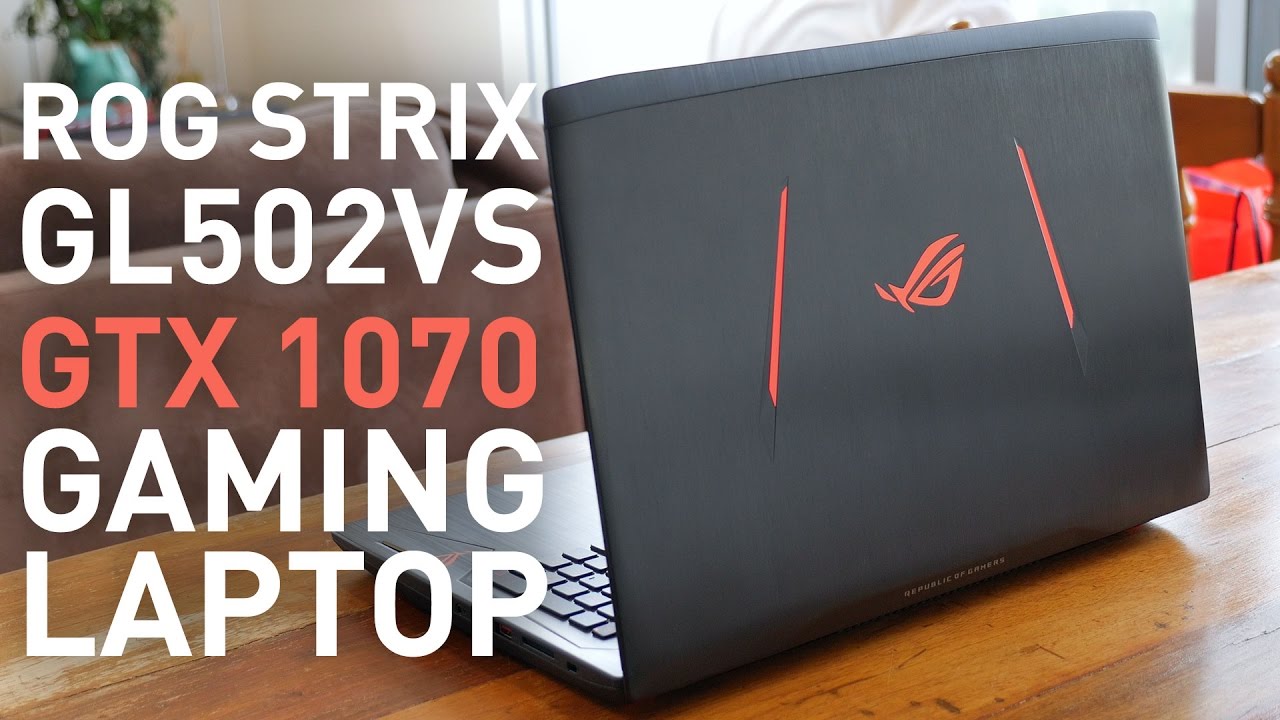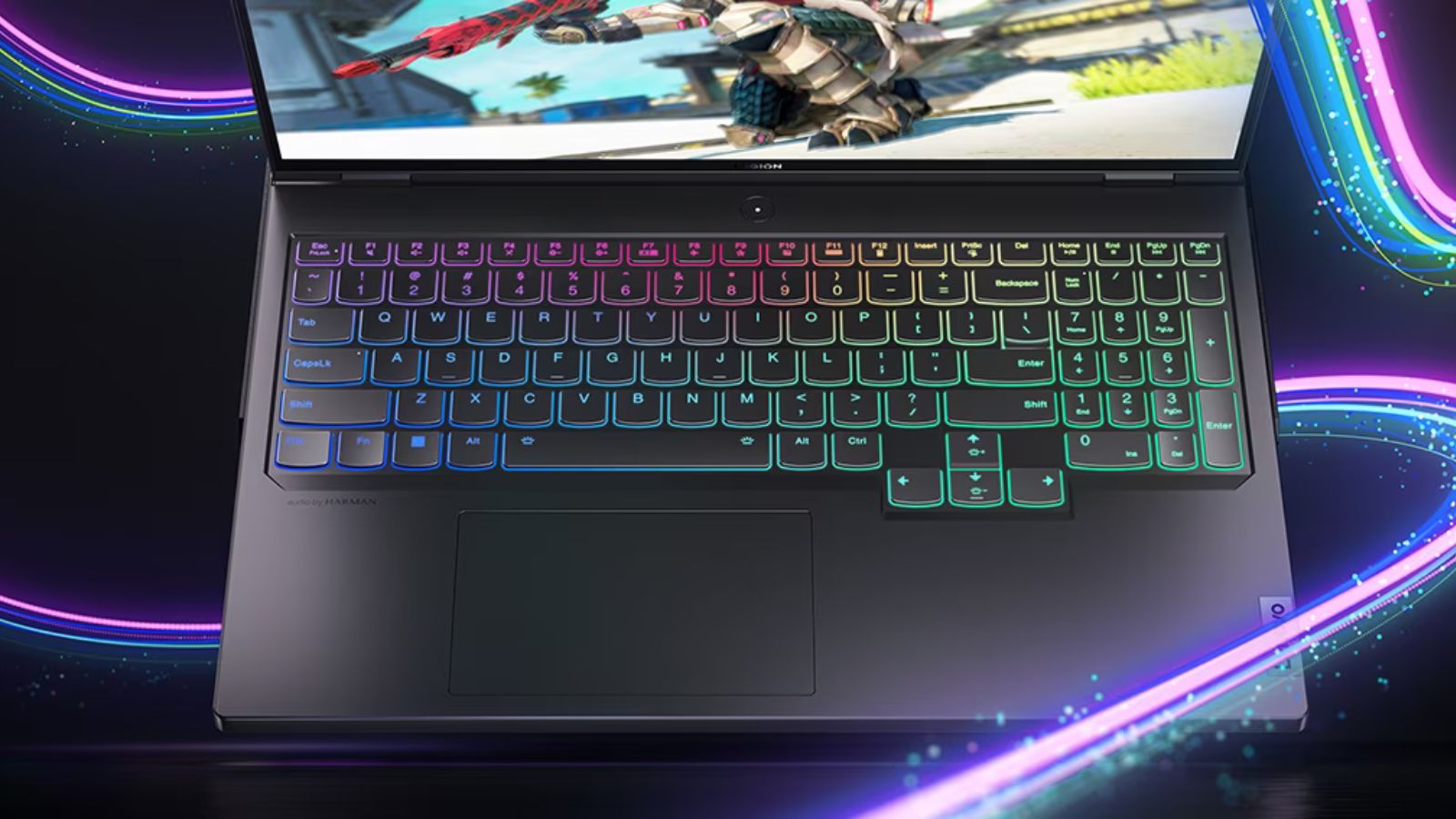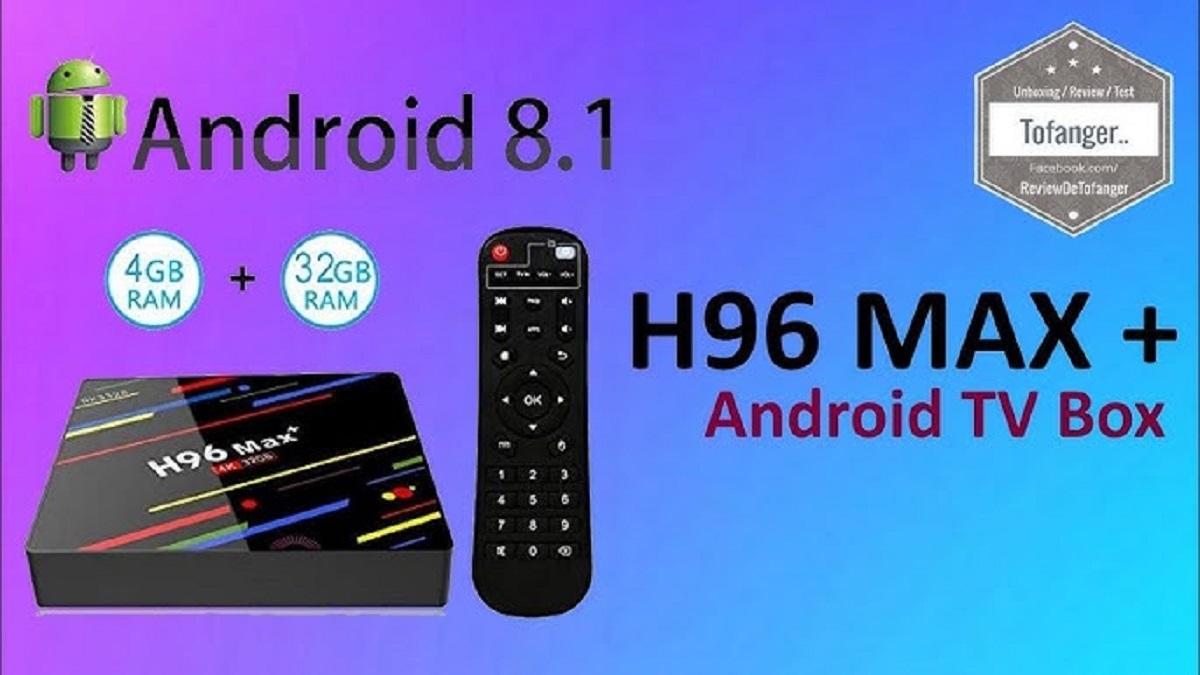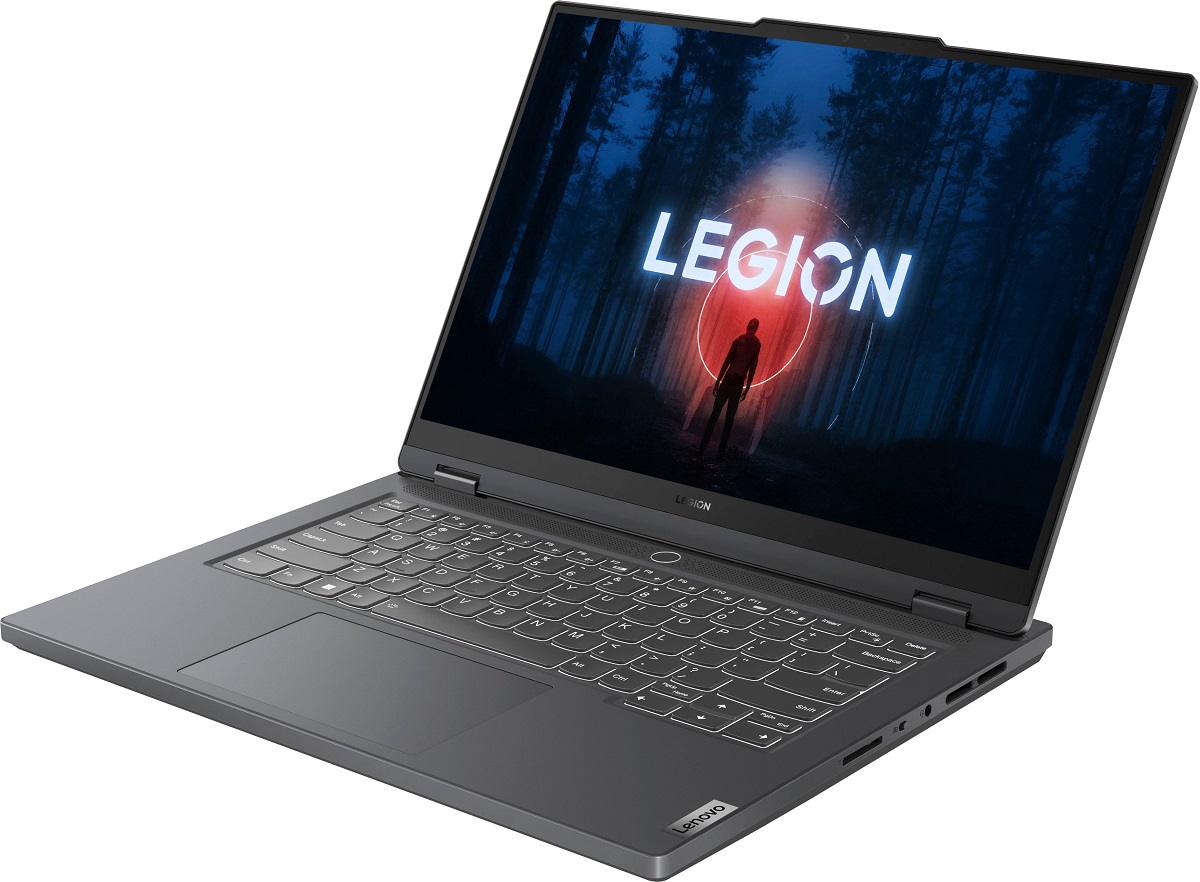Introduction
Welcome to another article on the fascinating world of computer graphics! If you’ve ever dabbled in gaming or other graphics-intensive tasks, you may have come across the term “GPU RAM”. But what exactly is GPU RAM, and what role does it play in your computer’s performance? In this article, we’ll dive deep into the world of GPU RAM, exploring its purpose, how it works, and why it is important.
GPU RAM, or Graphics Processing Unit Random Access Memory, is a dedicated type of memory that is specifically designed to be used by the graphics processing unit (GPU) of a computer. It serves as a temporary storage space for the data that the GPU needs to perform its tasks efficiently. Similar to how your computer has system RAM to store data that the CPU needs for general computation, GPU RAM provides a dedicated space for the GPU to quickly access data related to graphics rendering, image processing, and other graphical operations.
When it comes to graphics-intensive tasks, such as gaming or video editing, the GPU plays a crucial role in delivering smooth, high-quality visuals. The GPU RAM is an essential component of the GPU’s processing power, as it determines how much data the GPU can handle at any given time. In simpler terms, the more GPU RAM your system has, the more images, textures, and other graphical elements it can load and process simultaneously.
While GPU RAM and system RAM serve similar functions, they are distinct and operate independently. System RAM is responsible for handling general computing tasks and storing data that the CPU needs to perform its operations efficiently. On the other hand, GPU RAM is purpose-built for the specialized tasks that the GPU performs, such as rendering complex 3D graphics or running machine learning algorithms.
So, how much GPU RAM do you actually need? The answer depends on the specific requirements of your graphics-intensive tasks and the types of applications you use. In general, the more demanding the task, the more GPU RAM you will need. For casual gamers or users who primarily engage in light graphic design work, a few gigabytes of GPU RAM may suffice. However, for professionals working on high-resolution video editing or 3D modeling, a system with multiple gigabytes or even terabytes of GPU RAM may be necessary.
Increasing the amount of GPU RAM in your system can be beneficial if you find that you frequently encounter performance issues, such as lag or slow rendering times. However, it is important to note that the amount of GPU RAM your system can support is limited by various factors, including your motherboard’s specifications and the capabilities of your GPU. Consult your system’s documentation or manufacturer’s website to determine if upgrading your GPU RAM is a viable option for your specific setup.
As you can see, GPU RAM plays a vital role in the performance and efficiency of your computer’s graphics processing. Understanding what GPU RAM is, how it works, and how much you need can help you make informed decisions when it comes to selecting or upgrading your computer’s GPU. In the following sections, we will explore these topics in more detail, giving you a deeper understanding of the inner workings of GPU RAM.
What is GPU RAM?
GPU RAM, or Graphics Processing Unit Random Access Memory, is a specialized type of memory that acts as a temporary storage space for data used by the graphics processing unit (GPU) of a computer. It is specifically designed to handle the intensive computational tasks required for graphics rendering, image processing, and other graphical operations.
GPU RAM is different from system RAM, which is the primary memory used by the central processing unit (CPU) for general computing tasks. While both types of memory serve the purpose of storing and accessing data, GPU RAM is optimized for the parallel processing needs of the GPU.
One of the key characteristics of GPU RAM is its high bandwidth, which allows for quick data transfers between the GPU and the memory. This is crucial for rendering complex graphics and handling large amounts of graphical data efficiently.
The capacity of GPU RAM can vary depending on the specific GPU model and its intended use. Entry-level GPUs may have lower amounts of GPU RAM, typically ranging from 2GB to 4GB, which can handle basic gaming and graphics tasks. Mid-range GPUs usually offer higher capacities, ranging from 6GB to 8GB, suitable for more demanding gaming and graphics workloads. High-end GPUs used for professional applications, such as video editing or 3D rendering, can have even greater capacities, reaching up to 24GB or more.
It’s important to note that GPU RAM operates independently of system RAM. While the GPU relies on GPU RAM for its tasks, it does not directly share memory with the CPU. This segregation allows the GPU to have dedicated memory that is solely focused on handling graphics-related tasks, optimizing performance and efficiency.
In summary, GPU RAM is a specialized type of memory that is essential for the efficient operation of the graphics processing unit. It provides a dedicated space for the GPU to store and access data related to graphics rendering, image processing, and other graphical operations. With its high bandwidth and capacity, GPU RAM plays a vital role in delivering smooth and high-quality visuals in gaming, video editing, and other graphics-intensive tasks.
How Does GPU RAM Work?
GPU RAM, or Graphics Processing Unit Random Access Memory, works in conjunction with the graphics processing unit (GPU) to store and access the data necessary for graphics rendering and other graphic-intensive tasks. Understanding how GPU RAM works can shed light on its importance in optimizing the performance and efficiency of your computer’s graphics processing.
When you initiate a graphics-intensive task, such as launching a game or running a 3D modeling application, the GPU is responsible for processing the complex calculations required to generate the visuals. The GPU retrieves the necessary data from system RAM, where it is temporarily stored, and transfers it to the GPU RAM for faster and more efficient access.
Once the data is stored in the GPU RAM, the GPU can quickly access and manipulate it to perform the necessary calculations. This process, known as parallel processing, allows the GPU to handle numerous tasks simultaneously, resulting in smoother graphics rendering, reduced lag, and improved overall performance.
GPU RAM’s high bandwidth, which refers to the speed at which data can be transferred, plays a crucial role in optimizing its performance. This high bandwidth enables the GPU to rapidly read and write data to and from the GPU RAM, ensuring that the calculations are performed in the shortest possible time.
Additionally, GPU RAM uses specialized memory controllers to efficiently manage and organize the data. These memory controllers divide the GPU RAM into smaller sections called memory banks and distribute the data across these banks. By doing so, the memory controllers allow the GPU to access multiple chunks of data in parallel, further enhancing performance.
It’s worth noting that the size of the GPU RAM, along with its bandwidth and memory controllers, directly impacts the GPU’s capabilities. A larger capacity of GPU RAM allows for the storage and manipulation of more data simultaneously, enabling the GPU to handle more complex graphics and intense workloads. Similarly, a higher bandwidth and efficient memory controllers facilitate faster data transfer and optimize the GPU’s processing speed.
In summary, GPU RAM works in tandem with the GPU to provide a dedicated, high-speed memory space for storing and accessing the data required for graphics processing. Its high bandwidth and specialized memory controllers ensure fast and efficient data transfer and enable parallel processing, resulting in improved graphics performance, reduced latency, and enhanced overall user experience.
Why is GPU RAM Important?
GPU RAM, or Graphics Processing Unit Random Access Memory, plays a pivotal role in the performance and efficiency of your computer’s graphics processing. Understanding why GPU RAM is important can help you appreciate its significance in delivering smooth and high-quality graphics for gaming, video editing, and other graphics-intensive tasks.
One of the primary reasons GPU RAM is important is its ability to store and access large amounts of data quickly. As graphics become more complex and demanding, the GPU needs a sufficient amount of memory to handle the intricate details of rendering high-resolution textures, lighting effects, and intricate 3D models. GPU RAM provides the necessary space for the GPU to load and process these graphical elements efficiently.
In addition to storing graphical data, GPU RAM also stores intermediate results and computations performed by the GPU. This allows the GPU to retrieve and reuse previous calculations, reducing the need for redundant computations and improving overall performance.
Moreover, GPU RAM is important for seamless multitasking between graphics-intensive applications. If you have multiple graphics-heavy applications running simultaneously, such as a game, video editing software, and a 3D modeling program, having an adequate amount of GPU RAM ensures that each application can access the memory it needs without slowing down or causing performance issues.
In gaming, GPU RAM plays a crucial role in delivering smooth gameplay and ensuring that graphical elements are loaded quickly. The more GPU RAM available, the more textures, shaders, and other graphical assets can be stored, resulting in faster rendering times and reduced loading screens. This allows gamers to enjoy visually stunning and immersive experiences.
Furthermore, GPU RAM is essential for professionals working in graphic design, video editing, 3D modeling, and other creative fields. These tasks often involve handling large file sizes, high-resolution images, and complex graphics. Sufficient GPU RAM allows for seamless manipulation of these elements, allowing artists and designers to work efficiently without experiencing performance bottlenecks.
It is worth noting that the amount of GPU RAM required depends on the specific tasks and applications you use. While entry-level GPUs with lower amounts of GPU RAM can handle basic graphics tasks, more demanding applications and higher settings in games may require higher capacities of GPU RAM.
In summary, GPU RAM is important for efficient graphics processing and plays a critical role in delivering smooth and high-quality visuals. It enables the GPU to store and access a large amount of graphical data, perform calculations quickly, and handle complex graphics-intensive tasks. Whether you’re a gamer, graphic designer, video editor, or professional in a creative field, having adequate GPU RAM is crucial for optimal performance and a seamless user experience.
Differences Between GPU RAM and System RAM
While GPU RAM and system RAM serve similar purposes in terms of storing and accessing data, there are key differences that set them apart. Understanding these differences can help clarify their respective roles in a computer system.
1. Function: The primary difference between GPU RAM and system RAM lies in their intended functions. GPU RAM is specifically designed to cater to the demanding computational requirements of the graphics processing unit (GPU). It stores and accesses the data needed for graphics rendering, image processing, and other graphical operations. System RAM, on the other hand, serves as the primary memory for the central processing unit (CPU) and handles general computing tasks.
2. Optimization: Both GPU RAM and system RAM are optimized to serve the specific needs of their respective processing units. GPU RAM is designed to deliver high bandwidth and fast transfer speeds, allowing for quick data access and processing by the GPU. In contrast, system RAM focuses on providing a broader range of functionalities and accommodating a variety of computing tasks required by the CPU.
3. Memory Capacity: The capacity of GPU RAM and system RAM can vary significantly. System RAM often has a larger capacity compared to GPU RAM since it needs to handle a wide range of computing tasks, such as running multiple applications simultaneously, managing the operating system, and handling general data storage. On the other hand, the capacity of GPU RAM is typically more limited, as it is primarily focused on storing data specifically required by the GPU.
4. Accessibility: GPU RAM and system RAM are not directly accessible to each other. They function as separate memory systems, with the GPU and CPU having dedicated access to their respective memory types. This segregation ensures efficient and optimized access to data for both the GPU and CPU, allowing them to work in parallel and maximize performance.
5. Usage Scenarios: GPU RAM is especially important for graphics-intensive tasks such as gaming, video editing, 3D modeling, and rendering complex visual effects. It enables the GPU to load and process large amounts of graphical data quickly, resulting in smooth and high-quality visuals. System RAM, on the other hand, is more crucial for multitasking, general computing tasks, and managing the overall system performance.
6. Upgradability: Upgrading GPU RAM and system RAM can have different implications. In some cases, upgrading GPU RAM may be possible by using a graphics card with a larger capacity. However, this is often limited by the specifications of the graphics card and the motherboard. Upgrading system RAM, on the other hand, is typically more straightforward, as it involves adding or replacing RAM modules in the computer’s memory slots.
In summary, GPU RAM and system RAM have distinct roles in a computer system. GPU RAM is specialized for the graphics processing unit, providing high-speed data access and storage for graphics-intensive tasks, while system RAM caters to the general computing needs of the central processing unit. Understanding these differences highlights their unique functions and helps optimize system performance for specific tasks and applications.
How Much GPU RAM Do You Need?
The amount of GPU RAM you need depends on several factors, including the specific requirements of your graphics-intensive tasks and the types of applications you use. While there is no one-size-fits-all answer, understanding these factors can help you determine the appropriate amount of GPU RAM for your needs.
For casual gamers or users who engage in light graphic design work, a GPU with a few gigabytes (GB) of RAM may suffice. Most entry-level GPUs offer 4GB to 6GB of GPU RAM, which can handle basic graphics tasks and run less demanding games smoothly.
However, if you are a professional working with high-resolution video editing, 3D modeling, or employing advanced graphical effects, you may require a GPU with more RAM. Mid-range GPUs typically have 6GB to 8GB of GPU RAM, which can handle more demanding graphics workloads and provide smoother performance in gaming with higher graphics settings.
For professionals working on complex projects, such as 4K video editing, architectural design, or visual effects, a GPU with a higher capacity of RAM may be necessary. High-end GPUs can have 10GB or more of GPU RAM, providing the necessary resources to handle intense graphics rendering and processing efficiently.
It’s important to note that the amount of GPU RAM required also depends on the resolution at which you work or play. Higher resolutions, such as 1440p or 4K, can require more GPU RAM to store and process the increased number of pixels. If you plan to use multiple monitors or engage in multi-display setups, additional GPU RAM may be necessary as well.
Furthermore, consider the specific requirements of the applications you use. Some applications, such as video editing software or 3D rendering programs, may have recommended GPU RAM specifications. Consulting these recommendations can provide a baseline for determining the appropriate GPU RAM capacity for your specific workload.
It is worth mentioning that having more GPU RAM than you currently need does not necessarily translate to better performance. The key is to have enough GPU RAM to store and process the data efficiently without reaching memory limitations. Allocating excessive GPU RAM that goes unused may result in unnecessary expenses without a significant performance boost.
Lastly, keep in mind that the amount of GPU RAM your system can support is also limited by factors such as your motherboard’s specifications and the capabilities of your GPU. You should consult your system’s documentation or the manufacturer’s website to determine the maximum GPU RAM capacity supported by your setup before making any upgrades.
In summary, the amount of GPU RAM you need depends on the specific requirements of your graphics-intensive tasks, the applications you use, and the resolution at which you work. Balancing these factors will help you determine the appropriate GPU RAM capacity for optimal performance without exceeding your needs or budget.
Increasing GPU RAM
Increasing the amount of GPU RAM in your system can be a viable option if you find that your current GPU’s capacity is insufficient for your graphics-intensive tasks. While it may not always be possible to directly upgrade the GPU RAM itself, there are alternative methods you can explore to increase your available GPU memory.
1. Upgrading the Graphics Card: In most cases, the GPU RAM is integrated into the graphics card, which means upgrading the graphics card itself will provide a larger GPU RAM capacity. When upgrading the graphics card, it is important to ensure compatibility with your system’s motherboard, power supply, and other hardware components. Research different graphics card options to find one that offers a higher capacity of GPU RAM to meet your specific needs.
2. Utilizing Virtual Memory: Virtual memory, also known as the page file or swap file, is a feature in operating systems that allows a portion of the hard disk to be used as additional memory when the available RAM is depleted. By increasing the size of the virtual memory, you can allocate more disk space to act as a supplement to the GPU RAM. However, it is important to note that virtual memory is typically slower than physical RAM, so relying heavily on virtual memory may impact performance.
3. GPU RAM Overclocking: Overclocking your GPU RAM involves adjusting its operating frequency to increase performance. By increasing the clock speed of the GPU RAM, you can potentially achieve higher memory bandwidth and improved data transfer rates. However, it is crucial to exercise caution when overclocking, as it can lead to stability issues and overheating. Refer to your GPU manufacturer’s guidelines and use specialized software to ensure safe and effective overclocking.
4. Optimizing GPU RAM Usage: In some cases, you may be able to maximize the efficiency of your existing GPU RAM by optimizing its usage. This can include closing unnecessary background applications to free up GPU memory, reducing graphical settings in games or applications to decrease memory requirements, and ensuring that drivers and software are up to date for optimal performance. Additionally, optimizing your workflow and minimizing memory-intensive processes can help make the most efficient use of available GPU RAM.
It’s important to keep in mind that increasing GPU RAM is not always a straightforward process. Factors such as hardware compatibility, system limitations, and budget constraints can impact your ability to upgrade the GPU RAM capacity. Before making any changes or investments, ensure you thoroughly research and consider the specific requirements of your system to determine the most suitable method for increasing GPU RAM.
In summary, increasing the amount of GPU RAM can be achieved through methods such as upgrading the graphics card, utilizing virtual memory, overclocking, and optimizing GPU RAM usage. However, the feasibility of these options depends on factors such as system compatibility and budget. If you find GPU RAM constraints impacting your graphics-intensive tasks, carefully consider your options and choose the approach that best suits your needs and limitations.
Conclusion
In conclusion, GPU RAM, or Graphics Processing Unit Random Access Memory, is a vital component in optimizing the performance and efficiency of your computer’s graphics processing. It serves as a dedicated memory space for the GPU, allowing for quick access and manipulation of the data required for graphics rendering, image processing, and other graphical operations.
Understanding the importance of GPU RAM can help you make informed decisions when it comes to selecting or upgrading your computer’s GPU. The amount of GPU RAM you need depends on the specific requirements of your graphics-intensive tasks and the types of applications you use. Factors such as gaming, video editing, 3D modeling, and the resolution at which you work or play play a significant role in determining the appropriate GPU RAM capacity.
While increasing GPU RAM may not always be a direct option, alternative methods such as upgrading the graphics card, utilizing virtual memory, overclocking, or optimizing GPU RAM usage can help increase available GPU memory. It’s important to consider factors such as compatibility, system limitations, and budget when exploring these options.
Remember that GPU RAM operates independently from system RAM, which handles general computing tasks for the CPU. Both forms of memory are optimized for their respective processing units and serve different purposes. GPU RAM focuses on delivering high-speed, parallel processing capabilities for graphics-intensive tasks, while system RAM caters to general computing needs.
By understanding the differences between GPU RAM and system RAM, you can appreciate their unique roles and optimize your computer’s performance for specific tasks and applications.
In summary, GPU RAM is a crucial component in enabling smooth and high-quality graphical performance. Whether you’re a casual gamer, professional graphic designer, or involved in other creative fields, having adequate GPU RAM ensures efficient operations and an enhanced user experience. Consider your specific needs, consult recommendations of applications you use, and explore the various methods available to increase GPU RAM when necessary. With the right amount of GPU RAM, you can unlock the full potential of your computer’s graphics processing capabilities.









